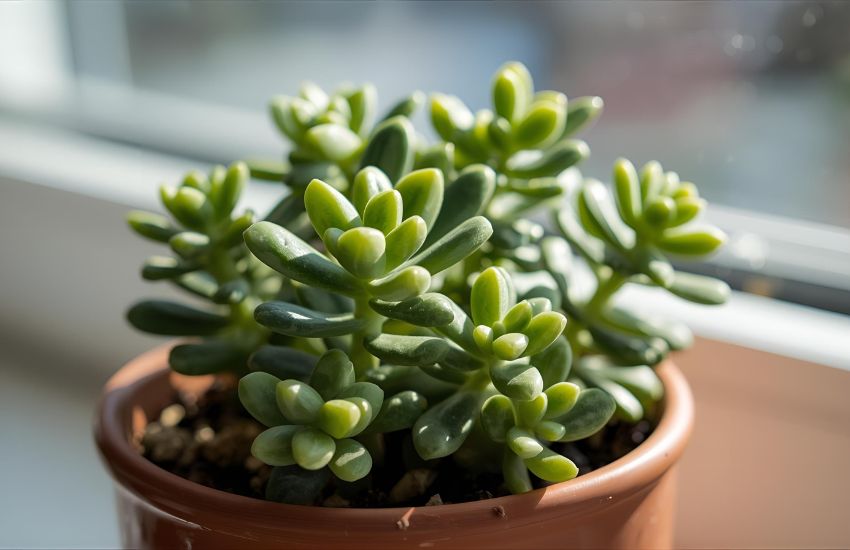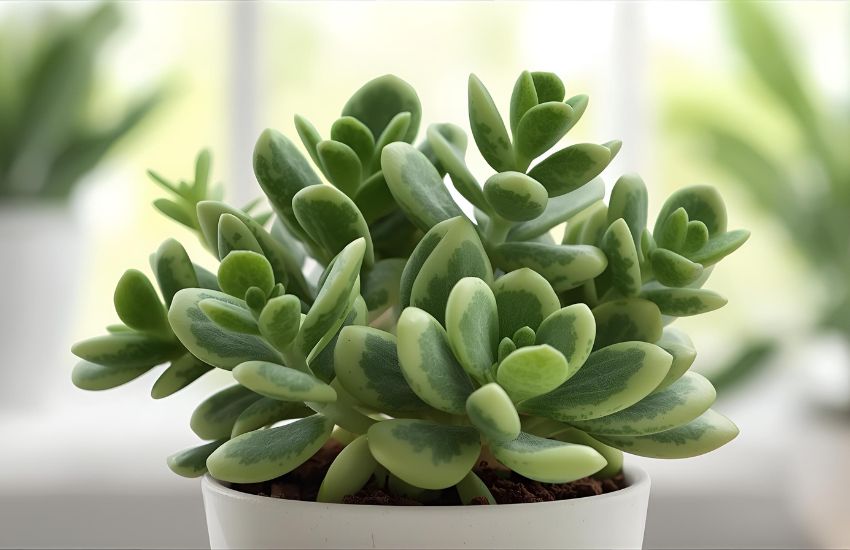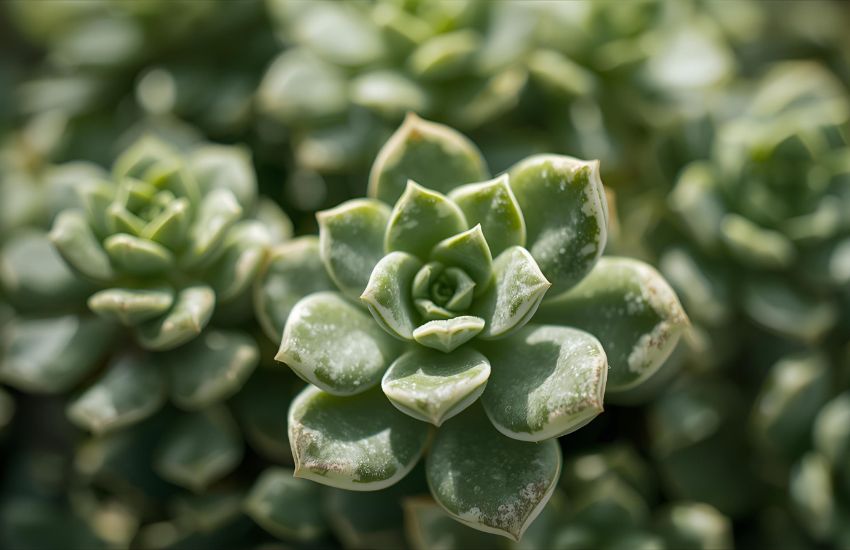Caring for a plant that blends beauty with resilience is always rewarding, and the Variegated Jade Mini Plant offers exactly that. Known scientifically as Crassula ovata, this succulent belongs to the crassulaceae family and is native to South Africa. Its miniature form, evergreen growth, and shiny leaves with a creamy margin make it a captivating variety for both beginners and enthusiasts. Whether styled as a bonsai or grown as a small shrub, this plant requires very little to thrive while rewarding you with its woody stem and fleshy leaves.
The Variegated Jade Mini Plant (Crassula Ovata) is a low-maintenance succulent that thrives in bright, indirect light. Water sparingly, allowing the soil to dry between waterings, and use well-draining soil to prevent root rot. Fertilize lightly during the growing season. With proper care, its fleshy, colorful leaves make it an elegant and long-lasting indoor plant.
In this guide, you will discover how to choose the right pot, manage temperature and sunlight, encourage strong root growth, and prevent common issues like rot. From understanding its native connection to Africa to learning successful propagation tips, you will gain all the knowledge required to nurture this stunning nursery favorite into a long-living, healthy jade.
Understanding the Variegated Jade Mini Plant and Its Beautiful Variegate Patterns

The Variegated Jade Mini Plant is a captivating form of jade that delights with its creamy-white and green leaves, making it stand out from traditional green varieties. Often referred to as a miniature jade or dwarf jade, this succulent plant is admired for its compact growth and adaptability, making it perfect for both indoor and outdoor displays. What makes this plant so unique is its striking variegation, where each leaf carries a blend of soft tones, creating an elegant and decorative effect that enhances any space.
As part of the larger family of succulent type plants, the Variegated Jade Mini is closely related to other fascinating cultivars like the spoon jade and hobbit jade. Each of these varieties showcases its own distinctive leaf shape and texture, but all share the same hardy, low-maintenance nature. Their thick, fleshy leaves store water, allowing the plant to tolerate occasional neglect and still remain healthy.
Over time, you will notice that this plant develops a stronger, tree-like presence, often producing multiple branch structures that resemble a tiny bonsai. The combination of its unique variegate patterns, manageable size, and resilience makes it a treasured choice for enthusiasts and collectors who want both beauty and practicality in a single jade plant.
Growing Jade Plant Varieties Including Spoon Jade and Hobbit Jade Indoors

Bringing jade varieties such as spoon jade and hobbit jade into your home is both rewarding and practical. These compact plants adapt beautifully when grown indoors, adding charm with their unique foliage and occasional clusters of star-shaped white flowers. While resilient by nature, they thrive best when you give them the right care and attention.
Choosing the Right Potting Soil
The foundation of healthy growth begins with soil. A jade plant requires a mix that supports proper drainage. Using a sandy or gritty potting soil is ideal because it prevents water from lingering too long around the roots. This balance keeps the plant strong and reduces the risk of rot.
Waterings and Overwatering Prevention
One of the most common mistakes when growing jade indoors is overwatering. Since jade plants are succulents, they store moisture in their leaves, which means they need less frequent waterings compared to many other houseplants. Allow the soil to dry slightly between each watering, ensuring the roots remain healthy and firm.
Providing Light and Indoor Conditions
To mimic natural sunlight indoors, place your jade near a bright window. If sufficient natural light isn’t available, you may supplement with a grow light to maintain steady growth. Adequate light exposure keeps the leaves vibrant and prevents legginess.
Temperature and Humidity Balance
Jade plants adjust well to typical indoor environments, but they still need stability. Moderate temperature and humidity are key for steady growth, while sudden fluctuations may stress the plant. Though often kept indoors, they can be placed outdoors during warm months if conditions remain favorable.
Bonsai Techniques for Styling and Caring for Variegated Jade Plant

Transforming your Variegated Jade Plant into a bonsai is a rewarding way to showcase its natural elegance and unique foliage patterns. With careful styling and patient training, you can shape this resilient succulent into a miniature tree that becomes the highlight of your collection.
Positioning and Light for Bonsai Growth
Placing your bonsai in a bright spot is crucial. A south facing window provides the strong light intensity needed to maintain compact growth and enhance the variegated stripe patterns on the leaves. Adequate sunlight ensures healthy coloration and prevents the plant from stretching out.
Training Through Pruning and Shaping
Pruning is essential to maintain bonsai form. You can cut back a leaf or stem to control size and encourage branching. Each trimming should be thoughtful, as the plant responds well to shaping but requires time to heal. Always let cuttings form a protective callus before replanting or training them further.
Caring for the Root System
When styling your jade as a bonsai, the root system must be carefully managed. Repotting every few years with fresh soil allows roots to stay healthy while preventing the plant from becoming root-bound. Good balance between roots and foliage is key to maintaining the tree-like structure.
Managing Environmental Factors
Although hardy, jade bonsai are sensitive to sudden changes in environmental factors. They thrive in warm, dry conditions but can be damaged by frost, which should always be avoided. Stable temperatures, proper airflow, and controlled watering help sustain the bonsai’s long-term health.
Conclusion
Caring for the Variegated Jade Mini Plant is both an art and a joy, especially when you understand its unique needs and stunning patterns. Whether you choose to style it as a bonsai, enjoy the charm of spoon jade and hobbit jade indoors, or admire the subtle beauty of a tricolor variety, this plant offers endless appeal.
By avoiding the risks of an overwatered root system, providing balanced light, and respecting its natural rhythm when it may go dormant, you ensure long-lasting growth and resilience.
Now is the perfect time to enrich your collection with this timeless succulent—start nurturing your own Variegated Jade Mini Plant today and experience the beauty of a living masterpiece.
Frequently Asked Questions (Variegated Jade Mini Plant Care: Crassula Ovata Growing Tips)
Where is the best place to put a jade plant in your house?
The best place to put a jade plant in your house is near a bright, sunny window where it can receive at least four to six hours of indirect sunlight daily. A south- or west-facing window is ideal. Ensure good air circulation and avoid cold drafts for healthy growth.
How do I make my crassula ovata thrive?
To make your Crassula ovata thrive, place it in bright, indirect sunlight for at least four to six hours daily. Use well-draining soil and water only when the topsoil is dry. Keep it in moderate temperatures, avoid overwatering, and occasionally fertilize during the growing season.
How to take care of variegated jade plants?
To care for variegated jade plants, place them in bright, indirect sunlight and water only when the soil is completely dry. Use well-draining soil and avoid overwatering. Keep them in warm conditions above 10°C. Occasionally wipe leaves and fertilize monthly during the growing season for best results.
How to make a jade plant happy?
To make a jade plant happy, place it in bright, indirect sunlight and water only when the soil is completely dry. Use well-draining soil and a pot with drainage holes. Maintain moderate temperatures, avoid overwatering, and wipe leaves occasionally to keep them dust-free and healthy.
